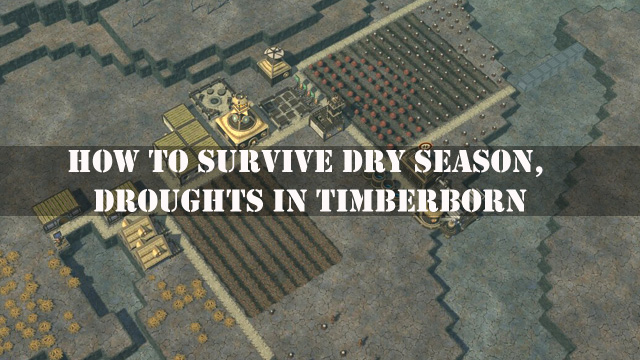Timberborn has two period cycles: wet and dry seasons. Players always begin in the wet season, and eventually receive a warning about the upcoming dry season when all water resources and crops start to dry up. If you’ve never survived a drought season in Timberborn, then this could be a really hard period for you.
This guide will provide you with tips on how to survive dry season and droughts in Timberborn. Note that each cycle of the dry season increases in time, and dry seasons last longer on higher difficulties.
Timberborn: Surviving Dry Season and Droughts
Step 1: Prepare Wood Storage
Preparing wood is one of the most important things you must do before the drought begins. Here’s what you need to do:
- Place a few Lumberjack Flags next to tree patches
- Connect the flags with paths
- Mark the trees you wish to cut for the process to begin
- Build Log Piles next to each Lumberjack Flag
- Place a few Gatherer Flags
- Build a Warehouse for storing wood
- Connect all these buildings with new paths
Step 2: Prepare Water Storage
Next is water, which will be needed the most during the dry season. Follow these steps:
- Build a couple of Water Pumps at the closest source of water
- Build 5-10 Water Tanks next to them
- Connect these new structures with paths
Step 3: Population Control
Now, you need to make sure that your beavers will have a new generation of workers by doing the following:
- Build 4-5 Lodges for your beavers to sleep and procreate
- Set up at least a few Campfires to make your beavers happy
- Make the beavers work longer hours
Step 4: Build a Dam
Dam will help you control and preserve the flow of water during both wet and dry seasons:
- Select the Dam from the Landscaping menu
- Set it up across the river flow next to your settlement
- Build another dam on the other side of the river
- Make sure that you have an isolated piece of river for your settlement
Step 5: Prepare Food Storage
Finally, you can start producing extra food and storing it for the season of drought:
- Go to Food menu and select Farmhouse
- Build a couple of Farmhouses next to Lodges
- Go to Plants and Crops menu
- Select Carrots and Potatoes
- Set them up next to the Farmhouses
- Connect all the structures with new paths
When the drought comes, your part of river that has been isolated with dams will not dry out. You will also have enough water in the tanks, food in the farmhouses, and wood in the warehouses to survive long enough until the next wet season.
In these few simple but well coordinated steps you will be able to survive dry season and droughts in Timberborn. If you want to know how to use Water Dumps in Timberborn, then follow this guide.







Published: Sep 30, 2021 08:02 am